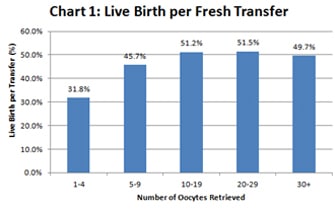What is natural cycle IVF?
During natural cycle IVF the goal is to retrieve the one (and only) egg a woman produces a month. The regimen reduces the use of drugs to stimulate the ovaries as occurs in a traditional IVF cycle. A traditional IVF cycle utilizes a precise drug regimen of daily shots to stimulate the ovaries and produce as many healthy eggs as possible.
Is natural cycle IVF more natural?
Fertility injections are still required to trigger ovulation and sometimes prevent ovulation. Close monitoring—often with daily blood draws and vaginal ultrasounds—are still needed. An egg retrieval procedure under anesthesia is still required to remove the egg, posing potential surgical risks and requiring time off from work.
Is it easier and ultimately less expensive?
For any given patient undergoing IVF, we expect that not every egg will develop into an embryo. Success rates for natural cycle IVF are low because there is at least a 50 percent chance that there will not be an embryo for transfer. Many would argue that this high rate of cycle cancellation actually creates more stress, compounded by the psychological and financial tolls that occur from waiting and trying again month after month.
Is natural cycle a better option than stimulated IVF for older women?
The simple answer is no. A study that looked at natural cycle IVF’s delivery rate found no live births in women age 42 and over and only a 2.4 percent delivery rate in women 41 to 42. For younger patients, the chance of success with natural cycle IVF is about the same as intrauterine insemination (IUI) while at a lower cost and avoiding a surgical procedure.
Outcome of unstimulated IVF by age group.

How should you decide between natural cycle IVF and traditional IVF?
It’s important to look at the following statistics to inform your decision.
- Examine the delivery rates based on age and the chance of cycle cancellation.
- Consider how many cycles may be necessary to achieve a healthy birth and the potential cumulative cost of treatment.
- Consider whether having frozen embryos for another pregnancy at a later age is a priority.
Why does SGF recommend traditional IVF vs natural cycle IVF?
Traditional IVF offers higher success rates than natural cycle IVF. On average, there is a higher chance for pregnancy per cycle with one stimulated IVF cycle than with three or four cycles of natural cycle IVF. Furthermore, a recent study presented during the 2016 ASRM Conference & Expo by Shady Grove Fertility shows that there is a higher chance of live birth per fresh embryo transfer in cycles with more eggs retrieved (Chart 1).
Traditional IVF is more cost-effective and a better value than natural cycle IVF. While the cost of single natural cycle IVF may be less than a single standard IVF cycle, in the long-run, a standard IVF cycle may be more cost effective.

Traditional IVF offers the opportunity to freeze extra embryos; natural cycle IVF does not. Stimulated IVF gives patients the opportunity to achieve pregnancy and create frozen embryos for future siblings, thereby preserving a woman’s fertility and maximizing her chances of meeting her long-term family planning goals, all in one cycle.
Traditional IVF offers the opportunity to complete genetic testing of the embryos; natural cycle IVF does not. Identifying a genetically normal embryo out of a group of embryos will maximize the efficiency of an IVF cycle, by improving the chance of pregnancy, reducing the risk for miscarriage, and shortening the time to achieving pregnancy. Since the majority of natural IVF cycles do not produce an embryo, and the majority of embryos > 40y are genetically abnormal, the potential time required to identify a genetically normal embryo from natural cycle IVF could take months or years.
REFERENCES
Gordon JD, DiMattina M, Reh A, Botes A, Celia G, Payson M. Utilization and success rates of unstimulated in vitro fertilization in the United States: an analysis of the Society for Assisted Reproductive Technology database. Fertil Steril. 2013 Aug;100(2):392-5.
Retrieval of larger oocyte cohorts maximizes in vitro fertilization (IVF) birth rates per cycle M.T. Connell, K.S. Richter, M.J. Tucker, J. Graham, A. DeCherney, M.J. Hill, M. Levy Fertility and Sterility, Vol. 106, Issue 3, e34–e35 September 2016.
Chang FE1, Beall SA2, Cox JM3, Richter KS4, DeCherney AH3, Levy MJ4. Assessing the adequacy of gonadotropin-releasing hormone agonist leuprolide to trigger oocyte maturation and management of inadequate response. Fertil Steril. 2016 Oct;106(5):1093-1100.e3.
Updated for medical accuracy: September 2018.






